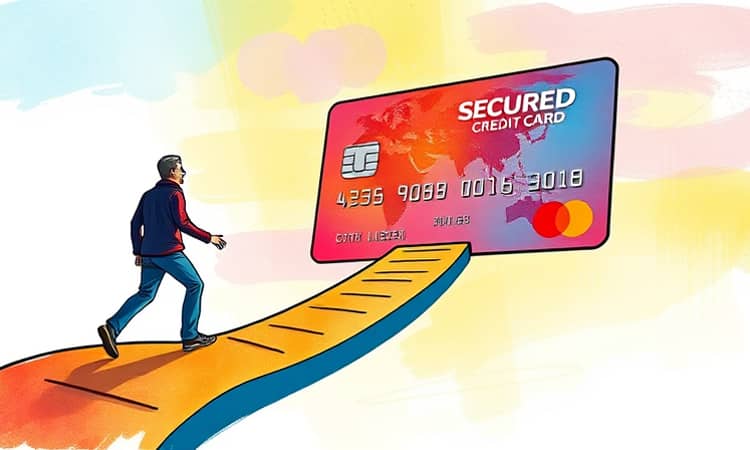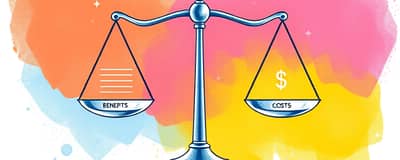Rebuilding credit can often seem like a daunting task, especially if you've faced challenges in the past. Secured credit cards offer a viable pathway for individuals looking to improve their credit scores and build a healthier financial future. Unlike traditional credit cards, secured cards are backed by a cash deposit that serves as collateral, which lowers the lender's risk and makes these accounts accessible to individuals with limited or poor credit history.
By understanding how secured cards work and how to use them effectively, you can take significant steps towards rebuilding your credit score. This guide outlines the entire process of using secured cards to your advantage, from evaluating your current financial situation to transitioning to an unsecured card.
Whether you're recovering from financial hardship, looking to establish credit for the first time, or simply wish to repair your credit history, following these steps will enable you to regain control over your credit. Let's explore the ins and outs of secured credit cards, their benefits, and how you can leverage them in your journey towards better credit.
Understanding Secured Credit Cards
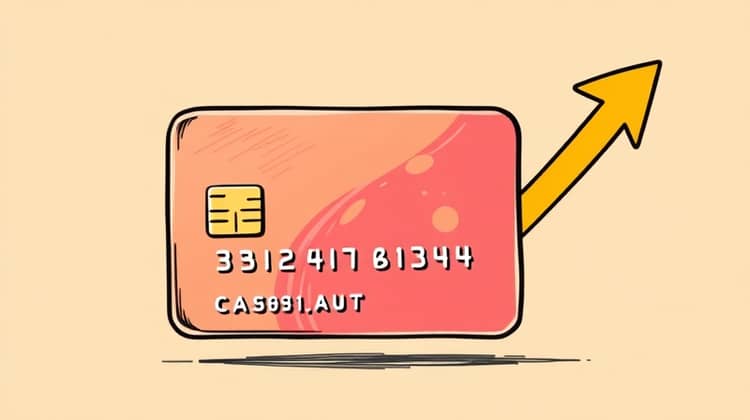
Secured credit cards are a special type of credit account designed primarily for individuals looking to rebuild or establish their credit history. The fundamental characteristic of a secured card is that it requires a cash deposit, which typically serves as your credit limit. This cash deposit protects the lender while providing you access to credit, thus lowering the risk typically associated with lending to someone with poor or no credit history.
One of the main advantages of secured credit cards is that they report your payment behavior to major credit bureaus, just like traditional credit cards. This means that responsible usage, such as making on-time payments and maintaining a low credit utilization ratio, can positively impact your credit score. Additionally, many secured cards offer the opportunity to transition to unsecured credit as your credit improves, making them a worthwhile long-term investment.
Before choosing a secured credit card, it is crucial to understand the terms and conditions, including interest rates, fees, and the required deposit amount. Familiarizing yourself with how these cards operate will help you make an informed decision and maximize their benefits.
- Require a cash deposit as collateral
- Help build or repair your credit history
- Typically have lower credit limits than unsecured cards
Overall, secured credit cards present a practical solution for individuals aiming to rebuild their credit scores. Understanding their mechanism and benefits is the first step towards utilizing them effectively.
Step-by-Step Guide to Rebuilding Credit with Secured Cards

Rebuilding credit using secured credit cards involves a series of strategic steps. By following this step-by-step guide, you can not only improve your credit score but also learn to manage your finances responsibly, which is essential for long-term financial health. The process requires careful evaluation of your situation, diligent research, and responsible card usage, all of which contribute to your credit rebuilding journey.
Each step outlined here is designed to set you up for success and ensure that you are making informed decisions. Remember that rebuilding credit is not an overnight process; it requires commitment and discipline. But with a targeted approach, you can make significant strides toward a healthier credit profile that will serve you well in future financial endeavors.
Let's dive deeper into the specific steps you should take to effectively rebuild your credit using secured credit cards.
1. Evaluate Your Situation
Before applying for a secured credit card, take a moment to assess your current financial situation. This includes understanding your credit score, the reasons why it may have declined, and your overall financial goals. Reflecting on these factors will help you establish a clearer pathway to rebuilding your credit.
Next, consider your spending habits and how you can make improvements. Are there areas where you tend to overspend, or habits that may be counterproductive to your credit-building goals? Taking stock of your finances will provide valuable insight into your decision-making process as you initiate this step towards credit recovery.
Finally, setting specific, measurable goals will keep you motivated. Whether it's achieving a certain credit score or qualifying for an unsecured card, having clear objectives will guide your efforts.
2. Research and Compare Secured Cards
Once you have evaluated your situation, the next step is to research and compare various secured credit cards available in the market. This involves examining their features, fees, interest rates, and terms to find one that aligns with your needs.
In this process, pay close attention to the amount of the security deposit required, as it will typically determine your credit limit. Some cards may offer lower fees or rewards programs that can add value, so analysis can help you find the best option available. Additionally, check whether the issuer reports to all three major credit bureaus, as this can impact how effectively your usage translates into rebuilding your credit score.
When comparing options, consider the long-term implications as well. A card with slightly higher fees may be worth the investment if it offers a clear path to an unsecured card in the future.
- Look for cards with reasonable fees and rates
- Check if the issuer reports to all major credit bureaus
- Consider additional benefits or rewards programs
Thorough research empowers you to make informed choices. A well-chosen secured credit card will set a solid foundation for your credit rebuilding journey.
3. Complete the Application
When you have identified a secured credit card that meets your needs, the next step is to fill out the application. This process usually involves providing personal information, including your Social Security number, income level, and geographic location, as well as the amount you plan to deposit as collateral.
It's essential to ensure that all details are accurate before submitting your application. Inaccuracies or omissions can lead to delays or even denial of your application. Be prepared to provide additional documentation if requested by the issuer, as this can help streamline the approval process.
After submitting your application, the issuer will review your credit history and financial information. If approved, you will receive your secured card along with terms of use and the required deposit information.
4. Fund Your Secured Card
Following approval, you will need to fund your secured credit card with the required cash deposit. This deposit typically becomes your credit limit; for example, a $300 deposit may grant you a $300 credit limit. It's essential to choose an amount you can afford and to use it responsibly.
Consider setting aside funds dedicated solely to this security deposit. While securing a credit line can be a beneficial opportunity, ensure that you're not compromising other essential financial responsibilities in the process.
It's also a good practice to maintain a buffer in your budget to accommodate for any potential unforeseen expenses as you begin using your secured card.
5. Use the Card Responsibly
Using your secured credit card responsibly is crucial for rebuilding your credit. This means making purchases you can afford and paying off your balance in full each month to avoid accruing interest charges. Keeping your utilization rate low—ideally below 30% of your available credit—will positively impact your credit score.
Additionally, try to establish a consistent payment schedule. Setting reminders or using automatic payments can ensure that you are always making payments on time. Timely payments are one of the most significant factors that credit bureaus consider when calculating your credit score.
Handling your finances with discipline and maintaining a budget that accommodates the cost of your credit card usage will facilitate your journey towards credit repair.
6. Monitor Your Credit
Keeping an eye on your credit health as you use your secured card is vital to ensure you're on the right path. Regularly checking your credit report can help you track your progress and identify any potential issues before they become serious problems. You can obtain free credit reports annually from each of the three major credit bureaus or use various online resources for regular credit monitoring.
Look for improvements in your credit score, but also pay attention to any discrepancies that may arise. If you notice anything inaccurate, it is crucial that you dispute it with the credit bureaus as soon as possible. Ensuring that your credit report accurately reflects your financial behavior will help maintain your integrity in the eyes of potential creditors.
- Check your credit report regularly (at least annually)
- Monitor your credit score through reliable platforms
- Dispute any inaccuracies you discover promptly
By taking the time to monitor your credit, you can make informed decisions about your finances and adjust your strategy as necessary.
7. Transition to an Unsecured Card
As you successfully rebuild your credit using a secured credit card, you may become eligible for an unsecured card. Transitioning to an unsecured credit card is a significant milestone, indicating that your credit has improved sufficiently to warrant a higher level of trust from lenders. Many issuers allow for this transition automatically after assessing your payment history and credit profile over time.
Consider waiting until you have established a strong credit score before applying for an unsecured card, as this can improve your chances of approval. An unsecured card will often come with more benefits and a higher credit limit than a secured card, further enhancing your financial flexibility. This change also marks a pivotal moment in your credit rebuilding journey.
Remember to maintain the responsible habits you've established during your time using a secured card and continue monitoring your credit progress even after the transition to an unsecured card.
Tips for Success
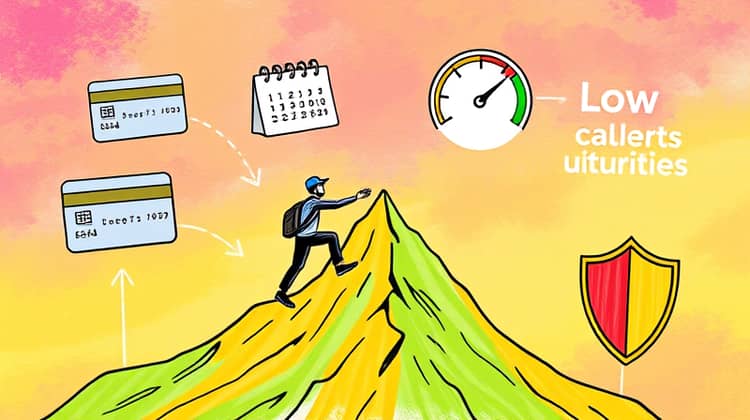
As you work through the process of rebuilding credit with secured cards, consider these essential success tips. These strategies will not only aid you in maximizing the benefits of your secured card but will also establish healthy financial habits for the future.
Be proactive about your credit education. Understanding credit scoring, the factors that influence your score, and the impact of your credit decisions can empower you to make informed choices moving forward.
- Make timely payments every month
- Keep your credit utilization low
- Avoid unnecessary hard inquiries on your credit report
Implementing these strategies will significantly boost your chances of success on your credit rebuilding journey.
Common Mistakes to Avoid

Navigating the world of secured credit cards can be tricky, and it's easy to fall into common pitfalls that can hinder your credit rebuilding efforts. Awareness of these mistakes can help you sidestep potential setbacks and maintain your progress towards financial health.
One frequent error is failing to pay the balance in full by the due date. This can lead to interest charges that complicate your efforts to manage your finances and can negate the positive aspects of using secured credit cards. Additionally, some individuals neglect to monitor their credit regularly, missing vital opportunities to correct errors or track progress effectively.
- Missing payments or making late payments
- Not keeping track of your credit report
- Using too much of your credit limit
Avoiding these common mistakes will accelerate your journey towards improved credit and financial well-being.
Conclusion
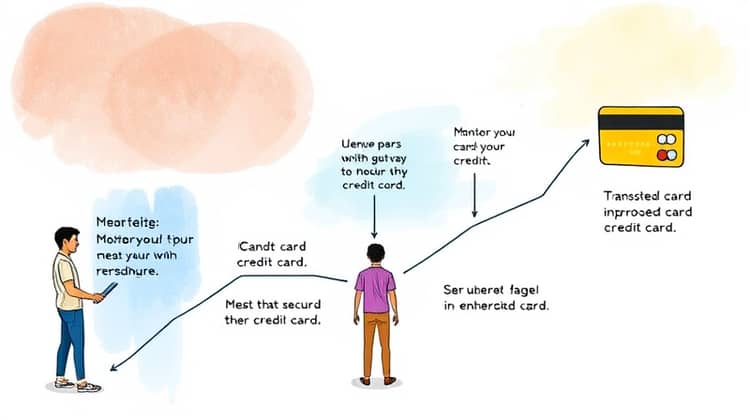
Rebuilding credit with secured credit cards is a proven and effective method for those seeking to improve their creditworthiness. By understanding how these cards operate and following a strategic approach, individuals can successfully enhance their credit scores over time.
From evaluating your financial situation and researching various secured card options to using your card responsibly and monitoring your progress, each step plays an important role in your credit rebuilding process. Additionally, transitioning to an unsecured card is an excellent sign of your credit restoration journey and a significant milestone in your financial life.
Remember, building credit takes time, patience, and diligent efforts to maintain good financial habits. By remaining committed to your goals and nurturing responsible credit practices, you will set the stage for a robust credit profile and future financial opportunities.

